The medical assistant competency checklist is a structured tool used to assess and verify the essential skills and knowledge required for proficient patient care and administrative tasks.
Overview of the Medical Assistant Competency Checklist
The medical assistant competency checklist is a comprehensive tool designed to evaluate and validate the essential skills and knowledge required for medical assistants to perform their duties effectively. It covers both clinical and administrative tasks, ensuring proficiency in patient care, documentation, and office management. The checklist typically includes specific tasks such as patient identification, vital signs measurement, and administrative duties like scheduling appointments and managing medical records. It serves as a structured guide for both students and practicing professionals to self-assess their abilities and identify areas for improvement. Employers also use this checklist to verify an individual’s readiness to handle job responsibilities. By aligning with professional standards, it ensures that medical assistants meet the expectations of healthcare employers and certifying bodies.
Importance of Competency Assessment in Medical Assisting
Competency assessment is crucial in medical assisting to ensure that professionals possess the necessary skills and knowledge to deliver high-quality patient care and manage administrative tasks effectively. It validates their ability to perform clinical procedures, maintain accurate records, and adhere to safety protocols. By evaluating core competencies, employers can verify that medical assistants are prepared to meet the demands of the healthcare environment. Competency assessment also helps identify areas for improvement, promoting continuous learning and professional growth. This process ensures compliance with industry standards, enhances patient safety, and builds trust in the quality of care provided. Regular assessments further support certification maintenance and contribute to the overall effectiveness of healthcare teams.
Purpose of the Competency Checklist
The purpose of the medical assistant competency checklist is to systematically evaluate and document the skills, knowledge, and abilities required for safe and effective patient care. It serves as a tool for assessing proficiency in both clinical and administrative tasks, ensuring that medical assistants meet industry standards. The checklist helps employers verify that staff can perform essential duties, such as patient identification, vital sign measurement, and medical record management. It also aids in identifying areas for additional training or improvement. By using this checklist, healthcare facilities can ensure compliance with legal and ethical standards, maintain patient safety, and promote continuous professional development. Ultimately, it supports the delivery of high-quality care and upholds the integrity of the medical assisting profession.
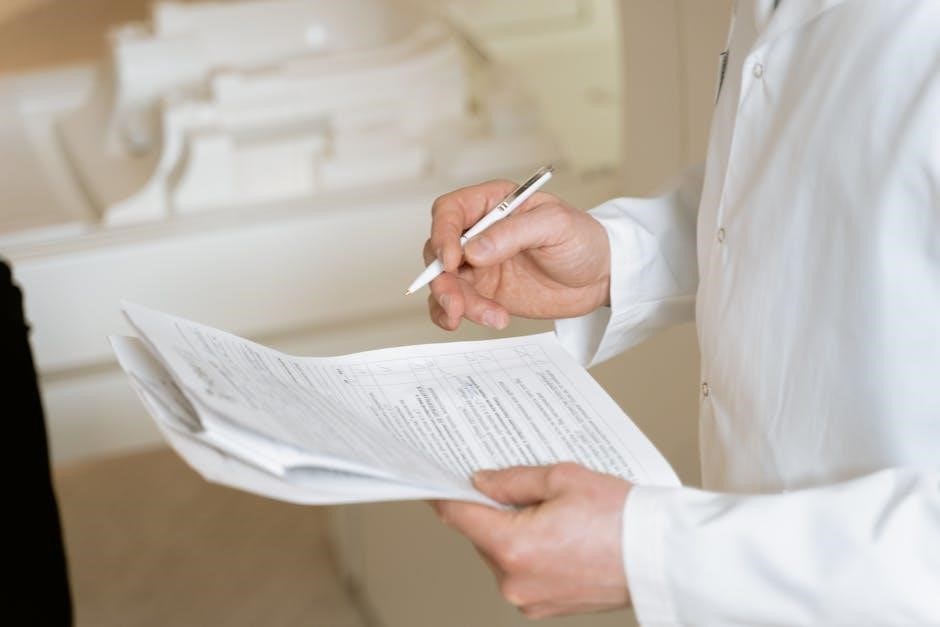
Core Competencies for Medical Assistants
Core competencies for medical assistants include general patient care, clinical procedures, and administrative tasks, ensuring a balance of technical skills and interpersonal abilities for effective healthcare delivery.
General Patient Care
General patient care involves essential tasks that ensure safe and effective interactions with patients. Competencies include patient identification, preparing examination or procedure rooms, and ensuring patient safety within the clinical setting. Medical assistants must demonstrate proficiency in maintaining a clean and organized environment, adhering to infection control protocols, and providing emotional support to patients. Additional skills include assisting with vital sign measurements, preparing patients for procedures, and ensuring proper positioning and comfort. Effective communication is critical, as medical assistants must clearly explain procedures, address patient concerns, and provide instructions for post-procedure care. These tasks are fundamental to delivering high-quality, patient-centered care and are often evaluated in competency checklists to ensure adherence to professional standards.
Clinical Procedures and Techniques
Clinical procedures and techniques are critical components of a medical assistant’s role, requiring precision and adherence to established protocols. Competencies include performing phlebotomy, venipuncture, and vital sign measurements accurately. Medical assistants must demonstrate proficiency in preparing patients for examinations, assisting with minor surgical procedures, and maintaining sterile technique during medical interventions. Proper use of medical equipment, such as autoclaves and centrifuges, is also essential. Additionally, they must ensure accurate labeling and handling of biological samples. These skills are evaluated to confirm mastery of clinical tasks, ensuring safe and effective patient care. The ability to follow infection control guidelines and maintain asepsis during procedures is paramount, reflecting the high standards expected in healthcare settings.
Administrative and Clerical Tasks
Administrative and clerical tasks are vital for the smooth operation of healthcare facilities, requiring medical assistants to manage front-office responsibilities efficiently. Key competencies include accurate scheduling of appointments, effective communication with patients, and proper management of medical records. Assistants must ensure confidentiality and compliance with regulations like HIPAA when handling sensitive patient information. Proficiency in electronic health records (EHR) systems is essential for maintaining and updating patient data securely. Additional tasks involve processing insurance claims, managing billing cycles, and performing basic bookkeeping. Strong organizational skills and attention to detail are crucial for minimizing errors in administrative duties. By mastering these tasks, medical assistants contribute to a well-organized and patient-focused healthcare environment, ensuring seamless administrative support to clinical operations. Their role bridges clinical care and office management, making their administrative skills indispensable to healthcare teams.

Clinical Competencies
Clinical competencies for medical assistants include patient assessment, vital signs measurement, and phlebotomy. Proficiency in preparing exam rooms and using medical equipment is essential. These skills ensure safe, effective patient care.
Patient Identification and Preparation
Patient identification and preparation are critical steps in ensuring safe and efficient care. Medical assistants must accurately verify patient identity using at least two identifiers, such as name and date of birth, before any procedure. Proper preparation involves creating a clean and comfortable environment, positioning patients correctly, and providing clear instructions to reduce anxiety. Assistants should also ensure all necessary supplies and equipment are ready for the healthcare provider. Accurate documentation of patient information and any preparation steps is essential for maintaining clear communication within the healthcare team. These tasks are foundational to delivering high-quality care and preventing errors. Competency in this area is vital for patient safety and operational efficiency in clinical settings.
Vital Signs Measurement

Vital signs measurement is a fundamental competency for medical assistants, ensuring accurate assessment of a patient’s health status. This includes measuring blood pressure, pulse, respirations, and temperature with precision. Proper technique and equipment calibration are essential to obtain reliable data. Medical assistants must document findings clearly and consistently, using standardized units and notation. Accurate recording aids healthcare providers in diagnosing and monitoring conditions. Competency also involves recognizing normal and abnormal ranges, enabling timely reporting of concerning values. Regular practice and adherence to infection control measures, such as using disposable cuffs, are critical. Proficiency in vital signs measurement is a cornerstone of patient care, supporting informed clinical decisions and maintaining continuity of care. This skill is regularly evaluated in competency checklists to ensure reliability and patient safety.
Phlebotomy and Venipuncture
Phlebotomy and venipuncture are critical clinical skills for medical assistants, involving the collection of blood samples for laboratory testing. Competency requires proper patient identification, site selection, and technique to ensure patient safety and sample integrity. Medical assistants must handle equipment safely, minimize discomfort, and label samples accurately to prevent mix-ups. Proficiency includes understanding contraindications and managing adverse reactions, such as fainting or bleeding. Proper use of personal protective equipment and adherence to infection control measures are essential to prevent biohazard exposure. Regular training and updates on best practices ensure high standards of care. This skill is frequently assessed in competency checklists to maintain reliability and patient trust in diagnostic procedures.
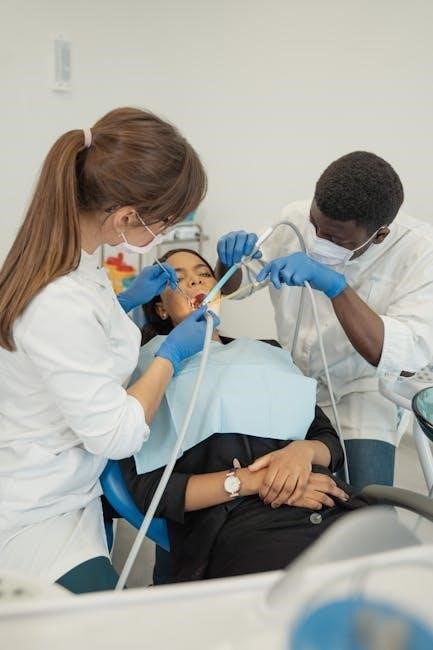
Administrative Competencies
Administrative competencies for medical assistants include managing medical records, scheduling appointments, and handling insurance and billing processes. Accuracy, confidentiality, and organizational skills are essential for efficient office operations.
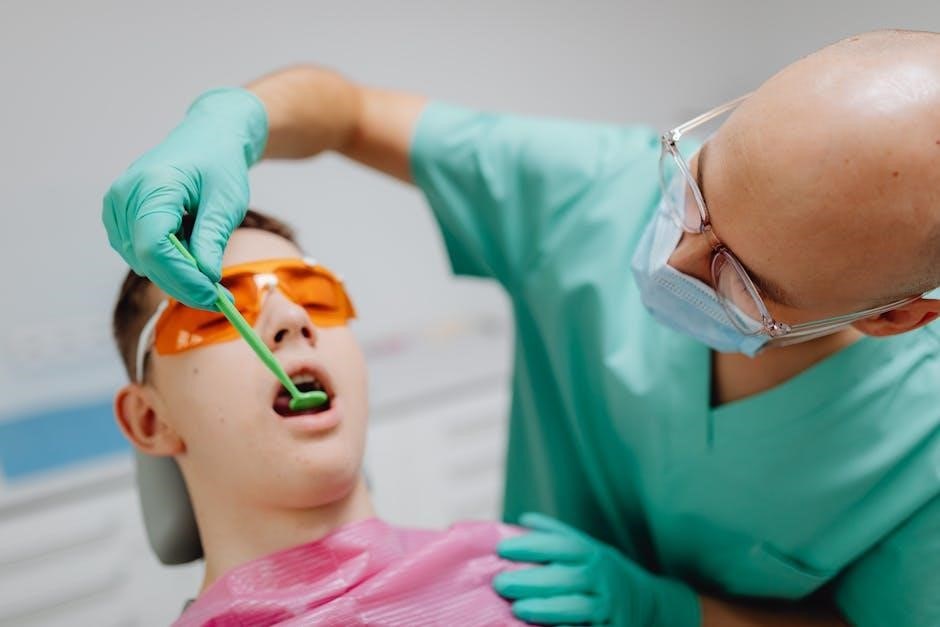
Medical Records Management
Medical records management is a critical competency for medical assistants, ensuring accurate and confidential handling of patient data. This includes preparing and maintaining charts, managing medical releases, and transferring information securely. Proper data entry, filing, and retrieval of records are essential tasks. Additionally, medical assistants must handle ICD-9 and CPT coding for billing purposes. They are responsible for purging and archiving outdated records, ensuring compliance with legal and ethical standards. Effective management of medical records supports seamless patient care and administrative efficiency. It also involves verifying accuracy and completeness of documentation, adhering to HIPAA guidelines, and maintaining patient confidentiality. Proficiency in this area is vital for healthcare operations and patient trust.
Appointment Scheduling
Appointment scheduling is a key administrative competency for medical assistants, ensuring efficient coordination between patients and healthcare providers. This involves managing calendars, verifying availability, and confirming appointments. Accurate communication with patients and providers is essential to avoid conflicts and ensure timely care. Competency includes handling cancellations, rescheduling, and managing waitlists effectively. Medical assistants must also ensure patient demographics are up-to-date and provide clear instructions for preparation or required documentation. Proficiency in using electronic health records (EHRs) for scheduling is critical. Effective appointment scheduling enhances patient satisfaction, reduces delays, and streamlines office workflows. It also involves handling special requests and ensuring reminders are sent to patients, promoting consistent and reliable care delivery.
Insurance and Billing Procedures
Insurance and billing procedures are critical competencies for medical assistants, ensuring accurate and efficient management of patient payments and claims. This includes verifying insurance coverage, processing claims, and handling patient billing inquiries. Competency involves understanding coding systems like ICD and CPT, preparing and submitting claims, and managing payments. Medical assistants must also resolve billing discrepancies and ensure compliance with insurance regulations. Effective communication with patients about their financial responsibilities and insurance benefits is essential. Maintaining accurate records and adhering to confidentiality standards are vital in this role. Proficiency in insurance and billing ensures seamless financial operations, supports patient satisfaction, and contributes to the overall efficiency of healthcare practices. Accurate handling of these tasks minimizes errors and promotes timely reimbursement, benefiting both patients and healthcare providers.
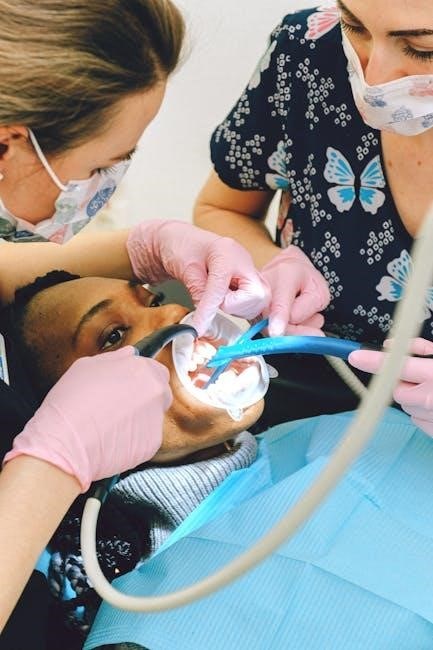
Infection Control and Safety
Infection control and safety are paramount, requiring medical assistants to adhere to hand hygiene, use personal protective equipment, and follow disinfection protocols to prevent disease transmission and ensure patient safety.
Hand Hygiene and Personal Protective Equipment
Proper hand hygiene and the use of personal protective equipment (PPE) are critical for maintaining infection control and ensuring patient and provider safety. Medical assistants must demonstrate competency in washing hands with soap and water or using alcohol-based hand sanitizers, especially before patient contact and after removing gloves. They should also understand when to wear gloves, gowns, and masks to prevent exposure to bodily fluids and pathogens. Competency includes correctly donning and doffing PPE to avoid contamination and properly disposing of used items. Adherence to these practices is essential for complying with infection control standards and reducing the risk of transmitting infectious diseases in healthcare settings.
Disinfection and Sterilization Techniques
Disinfection and sterilization are critical processes in healthcare to eliminate pathogens and maintain a safe environment. Medical assistants must demonstrate competency in using chemical disinfectants for non-critical surfaces and equipment, ensuring proper contact time and concentration. Sterilization methods, such as autoclaving, are essential for critical items that come into contact with sterile tissues; Competency includes understanding the difference between disinfection (reducing pathogens) and sterilization (eliminating all microorganisms). Proper techniques must be applied to prevent cross-contamination and ensure equipment safety. Adherence to manufacturer guidelines and infection control standards is vital. These skills are fundamental for maintaining patient safety and preventing the spread of infections in clinical settings.
Handling Biohazardous Materials
Handling biohazardous materials requires strict adherence to safety protocols to minimize exposure risks. Medical assistants must competently identify biohazardous substances, such as blood, bodily fluids, and contaminated sharps. Proper use of personal protective equipment (PPE), including gloves and lab coats, is essential. Competency includes safe handling techniques, such as using tongs or forceps for sharps, and correct disposal methods in designated biohazard containers. Spill management procedures, including containment and disinfection, must be followed to prevent environmental contamination; Understanding biohazard labels and signage is crucial for proper identification and handling. These practices ensure compliance with OSHA standards and maintain a safe environment for both patients and healthcare workers. Correct training and regular updates on protocols are necessary for sustained competency in this critical area.
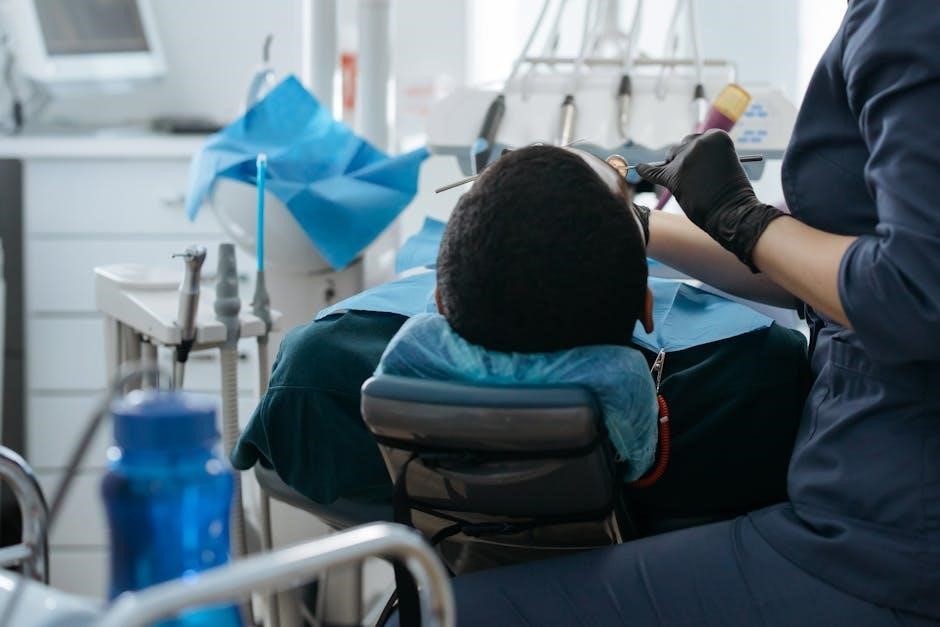
Communication and Interpersonal Skills
Effective communication and interpersonal skills are vital for medical assistants to interact with patients, families, and healthcare teams. Clear, empathetic, and professional interactions ensure understanding and trust.
Effective Patient Communication
Effective patient communication is a cornerstone of medical assisting, ensuring clear understanding and trust between patients and healthcare providers. This competency involves actively listening to patients, explaining procedures clearly, and addressing concerns with empathy. Medical assistants must communicate accurately, both verbally and non-verbally, to ensure patient comprehension and cooperation. They should also maintain confidentiality and adapt communication styles to meet diverse patient needs, including cultural and language differences. The competency checklist evaluates these skills, ensuring assistants can convey information sensitively and professionally. Additionally, effective communication with healthcare teams is critical for coordinating care and maintaining patient safety. By fostering open dialogue, medical assistants play a vital role in enhancing patient satisfaction and improving health outcomes. Continuous improvement in communication skills is essential for providing high-quality care.
Interacting with Healthcare Teams
Interacting with healthcare teams is a critical competency for medical assistants, ensuring seamless collaboration and effective patient care. This involves clear communication, active listening, and mutual respect among team members. Medical assistants must work cohesively with physicians, nurses, and other healthcare professionals to coordinate patient care, share relevant information, and address concerns promptly. They should also demonstrate adaptability, willingness to assist, and a positive attitude when working within a team environment. Effective teamwork fosters a supportive workplace culture, enhances patient outcomes, and improves overall efficiency. The competency checklist evaluates these skills, ensuring medical assistants can contribute effectively to multidisciplinary healthcare teams. Strong interpersonal skills and the ability to maintain professional relationships are essential for successful teamwork in fast-paced clinical settings.
Cultural Competence in Healthcare
Cultural competence in healthcare is essential for medical assistants to deliver inclusive and respectful care to diverse patient populations. This involves understanding and respecting patients’ cultural beliefs, values, and practices, which may influence their health behaviors and treatment preferences. Medical assistants must demonstrate active listening, empathy, and awareness of their own biases to provide unbiased care. They should communicate effectively across language and cultural barriers, using clear and simple language, and be sensitive to nonverbal cues. Additionally, they must respect patients’ privacy and confidentiality while accommodating their cultural preferences. Cultural competence fosters trust, improves patient satisfaction, and enhances health outcomes. The competency checklist evaluates these skills, ensuring medical assistants can interact respectfully and effectively with patients from all backgrounds, promoting equitable and person-centered care in diverse healthcare settings.

Documentation and Reporting
Accurate and timely documentation is crucial for maintaining patient records, ensuring continuity of care, and meeting legal standards in healthcare settings.
Accurate Chart Preparation
Accurate chart preparation is a critical task for medical assistants, ensuring all patient records are complete, organized, and up-to-date. This involves reviewing and organizing documents, verifying patient information, and ensuring compliance with legal and regulatory standards. Key tasks include labeling samples correctly, filing test results, and maintaining confidentiality. Proper chart preparation also involves preparing charts for upcoming appointments, updating medical histories, and ensuring all necessary forms are included. Attention to detail is essential to prevent errors and ensure seamless communication between healthcare providers. By adhering to standardized procedures, medical assistants play a vital role in maintaining accurate and reliable patient records, which are fundamental to delivering high-quality care.
Progress Note Documentation
Progress note documentation is a critical component of a medical assistant’s responsibilities, ensuring accurate and timely recording of patient interactions and care provided. These notes serve as legal and clinical records, detailing patient progress, treatments, and responses to care. Medical assistants must document observations, vital signs, procedures performed, and any changes in patient condition. Using standardized formats like SOAP (Subjective, Objective, Assessment, Plan) ensures consistency and clarity. Accurate documentation helps healthcare providers make informed decisions and maintains continuity of care. It also protects both patients and practitioners by providing a clear record of events. Proper progress notes must be concise, factual, and free from errors, reflecting the highest standards of patient care and professional accountability.
Incident Reporting
Incident reporting is a fundamental aspect of medical assistant competencies, ensuring the documentation of adverse events, near misses, or errors in patient care. This process is crucial for maintaining patient safety, improving quality of care, and reducing liability risks. Medical assistants must accurately and promptly report incidents, including detailed descriptions of what occurred, the individuals involved, and any subsequent actions taken. The report should be objective, factual, and free from personal biases or assumptions. Timely submission of incident reports allows healthcare facilities to investigate and implement corrective measures. Proper incident reporting also supports transparency and accountability, fostering a culture of safety and continuous improvement in healthcare settings. Medical assistants play a vital role in this process, ensuring incidents are documented thoroughly and in accordance with facility policies and legal standards.
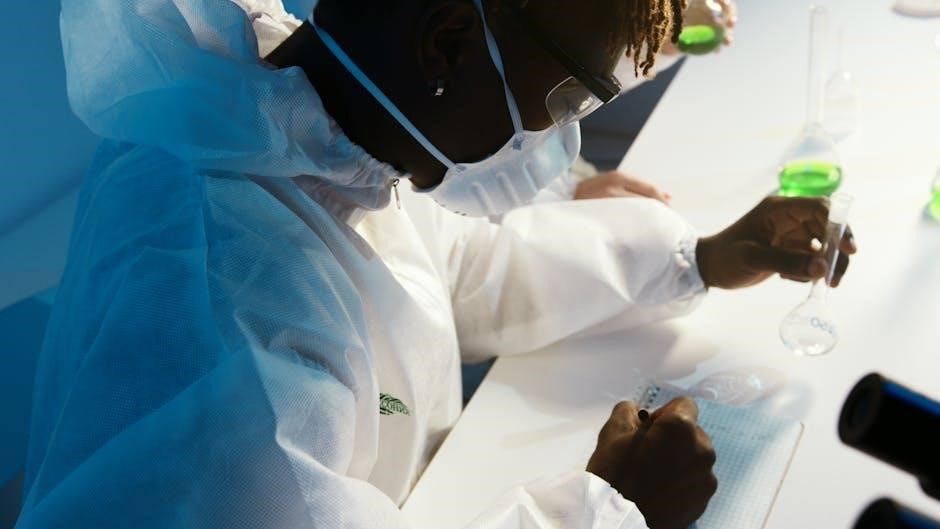
Professional Development
Professional development for medical assistants involves ongoing education, certification maintenance, and adherence to ethical standards, ensuring continuous improvement in skills and knowledge to deliver high-quality patient care.
Continuing Education Requirements
Continuing education is crucial for medical assistants to maintain certification and stay updated on medical advancements. Many certifying bodies, such as the RMA or CMA, require ongoing education credits. These credits ensure that medical assistants remain proficient in both clinical and administrative tasks. Topics often include updates on patient care techniques, infection control, and regulatory changes. Employers may also mandate additional training to address specific workplace needs or new technologies. Staying informed about best practices enhances job performance and patient outcomes. Regular competency assessments, such as those outlined in the medical assistant competency checklist, help verify that professionals meet current standards. By prioritizing lifelong learning, medical assistants contribute to a safer, more efficient healthcare environment; This commitment to growth is essential in the ever-evolving field of healthcare.
Certification Maintenance
Certification maintenance for medical assistants ensures that professionals uphold industry standards and remain competent in their roles. Certifying bodies, such as the American Medical Technologists (AMT) for Registered Medical Assistants (RMA) and the American Association of Medical Assistants (AAMA) for Certified Medical Assistants (CMA), require periodic renewal. This typically involves completing continuing education credits, passing recertification exams, or demonstrating ongoing competency through workplace assessments. The competency checklist serves as a guide to verify that certified medical assistants meet these requirements. Maintaining certification not only enhances credibility but also reflects a commitment to professional growth and patient care excellence. Regular reviews and updates to the checklist ensure that it aligns with current medical practices and standards, further supporting the integrity of the certification process.
Professional Ethical Standards
Professional ethical standards are fundamental to the role of medical assistants, ensuring they maintain integrity, confidentiality, and respect for patient rights. These standards guide decision-making and interactions, fostering trust between healthcare providers and patients. Key principles include confidentiality, honesty, and respect for patient autonomy. Adherence to these standards is essential for upholding the integrity of healthcare services and promoting a positive workplace environment. The competency checklist often includes assessments of ethical behavior, ensuring that medical assistants demonstrate professionalism and accountability in their daily practices. By adhering to ethical standards, medical assistants contribute to delivering high-quality, patient-centered care while maintaining the dignity and confidentiality of all individuals they serve.
The medical assistant competency checklist ensures proficiency in essential skills, bridging education and practice, while maintaining patient safety and care quality through standardized evaluation and certification processes.
The medical assistant competency checklist ensures proficiency in essential skills, including patient care, clinical procedures, and administrative tasks. Core competencies encompass general patient care, clinical techniques, and administrative functions. Clinical skills include patient identification, vital signs measurement, and phlebotomy. Administrative tasks involve medical records management, appointment scheduling, and insurance billing. Infection control and safety are critical, with emphasis on hand hygiene and biohazard handling. Effective communication and cultural competence are vital for patient interactions. Documentation and reporting require accuracy in chart preparation and incident reporting. Professional development includes continuing education and certification maintenance. These competencies ensure medical assistants deliver quality care while adhering to ethical and professional standards.
Final Thoughts on Competency Development
The medical assistant competency checklist serves as a foundational tool for ensuring proficiency and continuous improvement in healthcare settings. By focusing on key competencies such as clinical skills, administrative tasks, and infection control, medical assistants can deliver high-quality patient care. Regular competency assessments foster a culture of excellence, ensuring adherence to professional standards and ethical practices. Continuous learning and professional development are essential for maintaining certification and staying updated with industry advancements. Ultimately, the checklist not only enhances individual growth but also contributes to improved patient outcomes and organizational success. Its structured approach guarantees that medical assistants are well-equipped to meet the evolving demands of the healthcare field, fostering trust and reliability in their role.